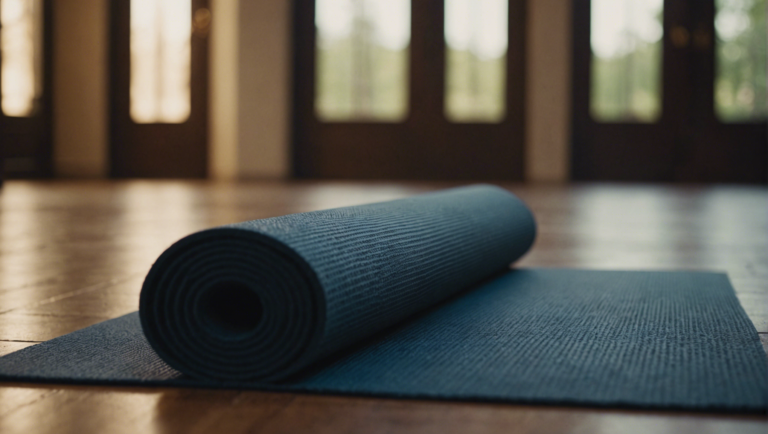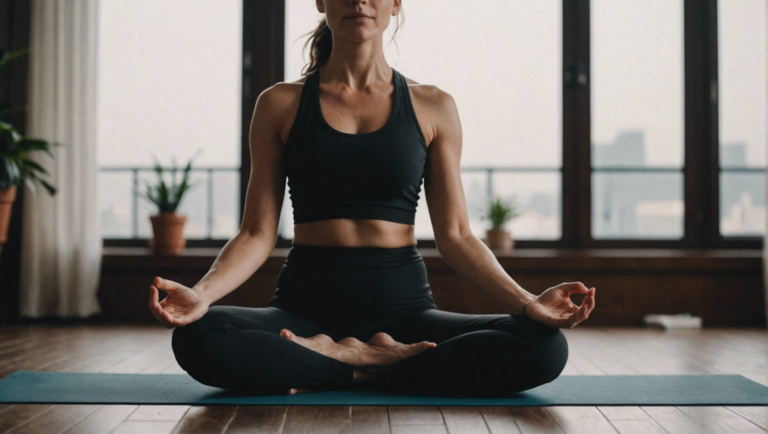Can Practicing Yoga Contribute To Increased Height?
The Relationship Between Yoga and Height Increase: Myth or Reality?
Exploring the Connection Between Yoga Practices and Height Growth
The age-old debate surrounding the potential of yoga to foster height increase is one that intertwines scientific inquiry with traditional beliefs. Delving into this subject requires a comprehensive understanding of human anatomy, the nature of yoga, and the physiological processes involved in growth. This exploration aims not only to dispel myths but also to illuminate the realities of yoga’s impact on physical development, specifically height.
What Drives Human Height Increase?
Human height is primarily determined by genetics, but it’s also influenced by external factors such as nutrition, overall health, and physical activity. Growth hormones play a pivotal role, especially during puberty. However, once the growth plates, or the epiphyseal plates in the bones, close — a process that typically concludes in the late teenage years — vertical growth ceases.
How Yoga Might Influence Height
Yoga, renowned for its holistic benefits, incorporates a series of stretches, poses, and deep breathing techniques. These exercises are believed to improve posture, flexibility, and muscle tone, and they possess the potential to impact the body’s growth indirectly.
Enhancing Posture and Spinal Health
One of the most tangible benefits of yoga is its ability to enhance posture. Many yoga poses focus on spinal alignment and stretching the back, which can correct slouching and compressive tendencies that detract from one’s height. Over time, consistent yoga practice can lead to a more erect posture, presenting the appearance of increased height.
Stimulating Growth Hormones
Certain yoga poses and stretches are thought to stimulate the body’s endocrine system, encouraging the release of growth hormones. Inversion poses, for example, temporarily reverse the effects of gravity on the body, potentially aiding in the rejuvenation and elongation of the spine. However, scientific evidence linking yoga directly to increased growth hormone levels and subsequent height increase is limited and warrants further research.
Yoga’s Role in Joint and Bone Health
While yoga cannot alter bone length after the growth plates have closed, it can play a significant role in maintaining joint and bone health. Flexible joints, strengthened by regular yoga practice, may support a more active lifestyle, indirectly contributing to the overall well-being necessary for the natural growth process during the developmental years.
Sifting Through Myths and Medical Evidence
It’s essential to approach claims of yoga-induced height growth with skepticism and an understanding of human biology. While yoga undoubtedly offers numerous health benefits, its direct influence on height after puberty is minimal at best. The perceived increase in height from yoga practice is often related to improved posture rather than actual growth.
The real value of yoga, in the context of height, lies in its preventative and corrective capacities—preventing the loss of height over time due to poor posture and spinal compression, and correcting postural misalignments that may conceal one’s natural stature.
Navigating the Path Forward
For individuals seeking to maximize their height potential, the best approach combines a balanced diet, adequate sleep, regular exercise, and, indeed, yoga. The latter not only aids in physical development but also enhances mental well-being, offering a comprehensive approach to health that transcends mere physical growth.
While the myth of yoga as a direct catalyst for height increase after puberty is largely debunked, its indirect contributions to posture, spinal health, and overall physical development cannot be overlooked. As more research unfolds, the nuanced relationship between yoga and physical growth will hopefully become clearer, shedding light on this ancient practice’s role in shaping not only the body but also the mind and spirit.
Engaging in yoga with realistic expectations—acknowledging its limitations and embracing its holistic benefits—can lead to a healthier, more balanced lifestyle. The quest for height increase through yoga may be a myth, but the journey towards enhanced well-being and self-awareness it initiates is a rewarding reality.
Anatomical Insights: How Yoga Poses Might Affect Spinal Health and Posture
The Relationship Between Yoga and Spinal Health
The ancient practice of yoga, with its roots deeply embedded in South Asian traditions, has evolved over centuries to become a popular global phenomenon, credited not just for its physical benefits but also for its profound impact on mental health. At the heart of these physical benefits is the potential improvement in spinal health and posture, a topic of interest for both seasoned yogis and newcomers to the practice.
Yoga’s emphasis on balance, flexibility, and strength naturally extends to the anatomical structure of the spine, offering a promising avenue for those seeking to improve their posture and mitigate back issues. This exploration delves into the anatomical insights behind yoga poses and their effects on spinal health, shedding light on how this ancient practice might contribute to a healthier back and overall posture.
Exploring the Anatomical Benefits of Yoga for the Spine
Human spine anatomy is complex, consisting of vertebrae, intervertebral discs, ligaments, and muscles—all designed to offer support, protection, and flexibility. However, contemporary lifestyles often contribute to spinal misalignments and tension, leading to discomfort and decreased mobility. Yoga, through its diverse poses (asanas), targets the spine’s flexibility and strength, potentially counteracting these modern-day maladies.
One of the cardinal benefits of yoga is its ability to foster an improved posture. Regular engagement with specific asanas can lengthen the spine, enhance alignment, and strengthen the muscles surrounding the spine. Poses such as Tadasana (Mountain Pose) and Bhujangasana (Cobra Pose) are quintessential examples, emphasizing spinal elongation and curvature, which are crucial for a healthy posture.
Yoga Poses and Their Impact on Spine Flexibility and Decompression
Flexibility is another cornerstone of spinal health, with yoga offering a structured path to achieving greater range of motion and reducing stiffness. Poses like Marjariasana (Cat Pose) and Bitilasana (Cow Pose), when practiced in conjunction, articulate the spine through flexion and extension, promoting spinal fluid movement and flexibility.
Moreover, yoga can be instrumental in spinal decompression. In today’s sedentary lifestyle, the spine often remains in a constant state of compression, leading to weakened discs and potential nerve impingement. Inverting poses such as Viparita Karani (Legs-Up-The-Wall Pose) and Adho Mukha Svanasana (Downward-Facing Dog Pose) encourage the opposite gravitational pull on the spine, aiding in the subtle decompression of the vertebrae and alleviating pressure on the discs.
Strengthening the Core to Support the Spine
Central to yoga’s approach to spinal health is the strengthening of the core muscles, including the abdominals, back, and pelvic muscles. A robust core is essential for maintaining spinal integrity and preventing injuries. Asanas such as Plank Pose and Paripurna Navasana (Boat Pose) target the core’s fortification, directly benefiting spinal stability and posture.
Practicing Mindfulness and Awareness for Spinal Alignment
Beyond the physical, yoga embeds the practice of mindfulness and body awareness, encouraging practitioners to maintain awareness of their posture and spinal alignment even outside the yoga studio. This heightened body awareness can lead to the correction of postural habits that may otherwise contribute to spinal strain and discomfort.
A Word on Safety and Individual Needs
While yoga offers numerous benefits for spinal health, it is essential to approach the practice with caution, especially for individuals with existing spinal conditions. Consulting with healthcare professionals and seeking guidance from experienced yoga instructors can tailor the practice to individual needs, ensuring safety and maximizing the health benefits for the spine.
Yoga’s holistic approach to well-being, encompassing both physical and mental health aspects, holds promising potential for those seeking to improve their spinal health. By promoting strength, flexibility, decompression, and awareness, yoga offers a comprehensive toolkit for enhancing posture and alleviating back pain, embodying the multifaceted benefits of this ancient practice in the realm of modern-day health challenges.
Growing Taller with Yoga: Evaluating Age and Genetic Limitations
The Science Behind Yoga and Height Increase
There’s a growing curiosity around whether yoga, the age-old practice known for its physical and mental benefits, can also be a vessel for achieving increased height. Amidst a backdrop of genetic determinants and the biological clock that dictates growth, yoga emerges as a fascinating contender in this quest for additional inches. To understand this possibility, it’s essential to delve into the realms of anatomy, physiology, and the inherent limitations set forth by our genes and age.
Exploring the Intersection of Yoga, Genetics, and Age
At the heart of this exploration is the recognition of the complex interplay between genetics and environmental factors in determining height. Genetics provides a blueprint, setting the foundational limit to how tall a person can grow. This genetic potential, however, is influenced by a multitude of factors including nutrition, health conditions, and indeed, physical activity. Yoga, with its emphasis on stretching, posture, and strength, naturally fits into the conversation about environmental factors that might influence height.
However, the window for influencing height is traditionally seen to close with the fusion of growth plates in late adolescence. This biological milestone, marking the end of vertical growth, is where the skepticism around yoga’s ability to increase height in adults finds its root. Yet, the story doesn’t end here. The discourse around yoga and height increase shifts focus from growth plates to spinal health and posture.
The Role of Posture and Spinal Health in Perceived Height
Yoga’s real contribution to height might not be in adding inches in the literal sense but in enhancing postural alignment and spinal health. Poor posture, characterized by slumped shoulders and a curved spine, can significantly detract from one’s apparent height. By strengthening the core, elongating the spine, and correcting misalignments, yoga practices can effectively ‘uncompress’ the vertebrae, leading to a more upright stance and potentially, a slight increase in height.
Regular engagement in yoga can also ameliorate common issues such as back pain and muscle tension, which further contributes to an improved posture. The asanas (poses) practiced in yoga, from Tadasana (Mountain Pose) to Bhujangasana (Cobra Pose), target the spine’s flexibility and strength. Over time, these exercises may lead to perceptible changes in how tall an individual appears.
Addressing Skepticism with Personal Narratives
The skepticism surrounding the potential for yoga to impact height is not unfounded. Science dictates that once the growth plates close, no amount of stretching, exercising, or nutrition can add to our skeletal height. However, personal narratives and anecdotal evidence suggest that individuals practicing yoga consistently report a sense of increased height and presence.
These narratives, while not a substitute for empirical research, provide a compelling testament to the role of yoga in enhancing bodily awareness, posture, and therefore, the perception of height. They underscore a vital aspect of yoga – its holistic impact on the individual, transcending mere physical dimensions.
Realistic Expectations and Holistic Benefits
It’s critical to approach the notion of growing taller through yoga with realistic expectations. Yoga offers a plethora of benefits, including improved flexibility, reduced stress levels, and enhanced mental clarity. While it may aid in maximizing one’s potential height through improved posture and spinal health, expectations of dramatic height increases, especially post-adolescence, might be misguided.
Yoga’s true value lies in its holistic approach to well-being, advocating for a balanced and healthy lifestyle. In this light, any improvements in height or posture should be viewed as secondary to the primary goal of overall health and well-being.
Engaging in Yoga with Expert Guidance
For those intrigued by the potential benefits of yoga on height and posture, it’s advisable to seek guidance from experienced practitioners. A tailored yoga regimen, designed with an understanding of one’s physical conditions and limitations, can optimize the benefits while minimizing the risk of injury. Engaging in yoga is not just about chasing inches; it’s about embracing a practice that enriches both body and mind.
Navigating the realms of yoga in the context of increasing height necessitates a nuanced understanding of genetics, age-related limitations, and the holistic nature of yoga. While the prospects of achieving significant height increases through yoga remain tempered by scientific understanding, the practice offers undeniable benefits for posture, spinal health, and overall well-being. In this journey toward a taller appearance, yoga emerges not as a miracle solution but as a nurturing, holistic practice with the power to transform our perception of our bodies and their capabilities.
A Comprehensive Guide to Yoga Poses That Promote Better Posture and Spinal Decompression
Yoga, an ancient practice rooted in over 5,000 years of Indian philosophy, has evolved into a holistic approach to wellness, offering benefits that extend beyond mere physical fitness. Among its many advantages, yoga is reputed for its ability to enhance posture and facilitate spinal decompression, leading to an overall improvement in body alignment and height. This guide delves into the yoga poses that are particularly effective in promoting better posture and aiding in spinal decompression, thus contributing to height enhancement.
Yoga Poses for Enhanced Posture
The journey towards a better posture through yoga begins with understanding the poses that focus on strengthening the back, shoulders, and core. These areas are crucial for maintaining an upright and balanced posture.
Mountain Pose (Tadasana)
Tadasana is the foundational pose for all standing poses in yoga. It teaches the alignment of the feet, which is crucial for a balanced posture. By practicing Tadasana, individuals learn to distribute their weight evenly across their feet, aligning their spine, and engaging their core, which is essential for good posture.
Cobra Pose (Bhujangasana)
Bhujangasana is a gentle backbend that strengthens the spine and opens the chest and shoulders. It counteracts the slouching tendency that comes from sitting for prolonged periods. The pose encourages thoracic spine extension, which is vital for improving posture.
Warrior I (Virabhadrasana I)
Warrior I is a powerful pose that combines lower body strength with upper body and spinal extension. The pose challenges your balance and stability, which are key components of good posture. The upward stretch also promotes spinal elongation, critical for decompressing the vertebrae.
Yoga Poses for Spinal Decompression
Spinal decompression through yoga involves poses that elongate the spine, creating space between the vertebrae. This alleviation of pressure can lead to a noticeable improvement in height over time.
Downward-Facing Dog (Adho Mukha Svanasana)
This pose is a staple in virtually every yoga practice for a good reason. Adho Mukha Svanasana stretches the spine, hamstrings, and calves while strengthening the arms and legs. The upside-down V shape of this pose encourages the spine to elongate downward, promoting decompression and flexibility.
Child’s Pose (Balasana)
Balasana is a resting pose that gently stretches the back muscles and spine. It relieves tension in the back, neck, and shoulders and encourages a natural spinal curvature, providing a gentle decompression effect.
Upward-Facing Dog (Urdhva Mukha Svanasana)
Urdhva Mukha Svanasana is an invigorating backbend that strengthens and extends the entire length of the spine. This pose facilitates an upward decompression of the spinal discs, inviting enhanced spinal health and posture improvement.
Tips for Practicing Yoga Poses for Posture and Spinal Decompression
Practicing these yoga poses regularly is key to gaining the benefits of improved posture and spinal decompression. However, several tips can enhance your practice:
- Consistency is Key: Incorporate these poses into your daily routine to see significant improvements over time.
- Focus on Form: Proper alignment is crucial. Pay attention to the alignment cues for each pose and consider working with a certified yoga instructor.
- Listen to Your Body: Respect your body’s limits and avoid pushing into pain. Progress should be gradual and comfortable.
- Breath Work: Utilize deep, controlled breathing to help release tension and deepen into the poses.
Yoga offers a non-invasive, therapeutic approach to improving posture and decompressing the spine, contributing to an overall sense of well-being and, potentially, an increase in height. Embracing these poses with attention to form, consistency, and a mindful approach will pave the way for noticeable improvements in posture and spinal health.
The Role of Diet and Nutrition in Supporting Yoga Practices for Height Gain
The interconnection between yoga practices and physical growth, particularly height gain, has intrigued many. While genetics predominantly determine one’s stature, yoga exercises are known for their ability to improve posture and spinal health, potentially affecting one’s perceived height. However, an often overlooked aspect of maximizing the benefits of yoga for height gain is the role of diet and nutrition. A well-balanced diet can significantly bolster the effects of yoga, making it a critical component for individuals aiming to increase their height through these practices.
Nutritional Foundations for Supporting Yoga
The Importance of Proteins and Amino Acids
Proteins are the building blocks of our body, crucial for growth and repair. For those engaged in yoga, a diet rich in protein supports muscle recovery and strengthens the body, aiding in exercises designed for height increase. Amino acids, the components of proteins, play a pivotal role in synthesizing hormones that are vital for growth.
Calcium and Vitamin D: Pillars for Bone Health
Calcium is essential for bone growth and density, while Vitamin D facilitates the absorption of calcium in the body. Yogic practices that aim to elongate the spine and improve posture can be more effective when the diet is supplemented with these nutrients, ensuring the bones are strong and capable of supporting such activities.
Magnesium, Zinc, and Phosphorus: Supporting Growth
Including foods rich in magnesium, zinc, and phosphorus in your diet can contribute to a robust skeletal structure and support the body’s growth mechanisms. These minerals assist in bone development and the regeneration of tissues, which is crucial for any physical activity, including yoga.
Hydration and Yoga: A Synergistic Relationship
Maintaining Optimal Hydration Levels
Water plays a crucial role in maintaining flexibility and preventing injuries during yoga practices. Proper hydration ensures that the discs between the spine stay pliable and resilient, indirectly contributing to height through improved spinal health and posture.
Enhancing Flexibility and Strength Through Hydration
The elasticity of muscles and connective tissues is vital for practicing yoga, especially those poses aimed at increasing height. Staying adequately hydrated improves muscle performance and flexibility, making it easier to engage in practices that stretch the spine and elongate the body.
The Impact of Diet Timing on Yoga Practices
Aligning Meal Times with Yogic Activities
The timing of meals can significantly influence the effectiveness of yoga practices. Eating light and nutritious meals a few hours before yoga ensures that the body has enough energy for the exercises without feeling sluggish or heavy, which is essential for achieving the best results from height-increasing yoga poses.
Post-Yoga Nutrition for Recovery and Growth
After engaging in yoga, it’s crucial to replenish the body with nutrients to aid recovery and support growth. Consuming a balanced meal enriched with proteins, healthy fats, and carbohydrates can accelerate muscle recovery and strengthen the body for future practices.
Balancing Macronutrients for Optimal Growth
Creating a Balanced Diet Plan
A balanced diet that includes an adequate proportion of proteins, fats, and carbohydrates is essential for supporting yoga practices aimed at height increase. This ensures the body has all the necessary nutrients for growth, recovery, and energy maintenance, ultimately enhancing the effectiveness of yoga in contributing to height gain.
Customizing Nutrition According to Individual Needs
Recognizing that every individual’s body responds differently to diet and exercise, customizing one’s nutrition plan according to personal health, lifestyle, and yoga practice intensity is key. Consulting with a nutritionist or dietitian can provide insights into optimizing a diet plan that complements one’s yoga routine for height gain.
Diet and nutrition play a crucial role in supporting yoga practices for height gain. By focusing on a balanced intake of essential nutrients, maintaining optimal hydration, and aligning meal timing with yogic activities, individuals can enhance the physical benefits of yoga, potentially contributing to an increase in height. This holistic approach, integrating both nutrition and yoga, offers a comprehensive pathway towards achieving not only one’s height goals but also a healthier and more balanced lifestyle.
Conclusion
Diving deep into the intricate connection between yoga and height, we unravel a complex yet fascinating landscape that marries myth with empirical evidence. The exploration of yoga’s potential to influence height growth necessitates a journey through various domains, including anatomy, genetics, and nutrition, each contributing a unique piece to the puzzle.
The examination of yoga’s relationship with height increase reveals a nuanced reality far removed from simplistic myths. While yoga alone may not dramatically alter one’s height, especially post the teenage years when the growth plates typically close, its impact on posture and spinal health cannot be overstated. Yoga practices, rooted in centuries-old traditions, offer more than holistic well-being; they provide a scientific foundation for maintaining spinal integrity and flexibility. This is crucial for optimizing one’s potential height, suggesting that the myth of yoga as a magical height enhancer needs refinement. Instead, its true value lies in posture improvement and spinal health.
Delving into anatomical insights, the connection between yoga and spinal health emerges as a cornerstone for understanding its possible effects on height. Yoga’s repertoire of stretches and poses is celebrated for its ability to decompress the spine, counteract the compression effects of gravity, and correct postural misalignments. In essence, yoga acts as a preventive and corrective measure, fostering optimal conditions for the spine to lengthen and straighten within one’s genetic blueprint. This revelation underscores the importance of maintaining a consistent yoga practice for spinal health, which indirectly could assist in maximizing one’s height potential.
The discourse on growing taller with yoga invariably encounters the immutable barriers of age and genetics. It’s imperative to acknowledge that these factors predominantly dictate one’s height. However, yoga carves out a space where minor improvements are conceivable, especially through posture enhancement and spinal decompression, in individuals whose growth plates have not yet closed. The narrative then shifts from yoga as a tool for increasing height to yoga as an agent for unlocking one’s height potential, dictated by genetic and age-related determinants.
A comprehensive guide to yoga poses that advance better posture and spinal decompression not only illuminates the practical pathway to achieving these benefits but also emphasizes the long-term commitment required. poses like Tadasana (Mountain Pose), Bhujangasana (Cobra Pose), and Marjariasana (Cat-Cow Pose) into daily routines sets the foundation for these transformations. Such practices spotlight the incremental and cumulative nature of yoga’s impact on the body, aligning expectations with realistic outcomes.
The indispensable role of diet and nutrition in augmenting yoga practices for possible height gains or optimal health brings to light the holistic approach required for such physiological enhancements. Proper nutrition fuels the body, supports tissue repair, and strengthens bones, which is essential for anyone looking to enhance their physical condition, including maximizing possible height during growth years. Therefore, integrating a balanced diet with targeted yoga exercises forms a symbiotic relationship fostering an environment conducive to physical and health improvements.
The exploration of yoga’s potential influence on height transcends the pursuit of physical growth, touching upon themes of well-being, self-acceptance, and the pursuit of optimal health. While yoga may not be a panacea for increasing height dramatically, especially in adults, its profound benefits on posture, spinal health, and overall well-being are irrefutable. In embracing yoga, we don’t just chase inches; we embark on a holistic journey towards better health, improved posture, and perhaps, a more serene acceptance of our natural stature. By integrating anatomical insights, acknowledging the limitations posed by genetics and age, selecting appropriate yoga poses, and supporting practices with nutrition, individuals can navigate towards realizing their own height’s potential, grounded in health and harmony. This holistic approach not only enriches the body but also the spirit, crafting a narrative that transcends mere physical growth to encompass a journey towards holistic well-being.





